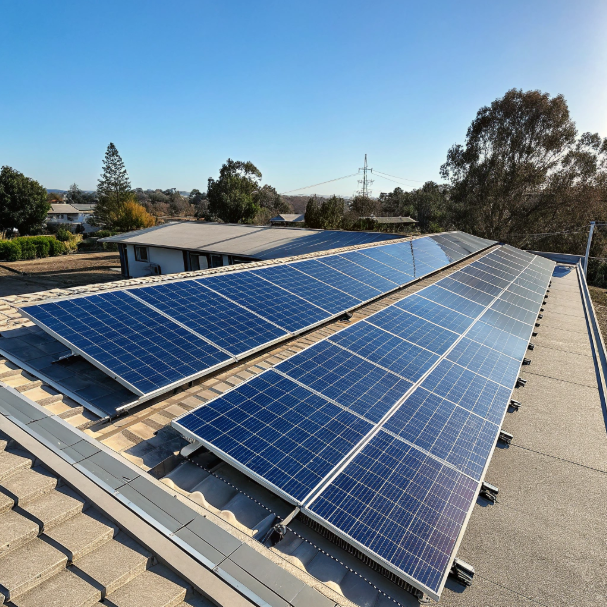Must-read for solar panel procurement: How to avoid inefficient products and save 30% on costs?
by
Must-read for solar panel procurement: How to avoid inefficient products and save 30% on costs?
Buying solar panels shouldn't feel like gambling. Yet 80% of buyers overpay for underperforming systems – here's how to spot red flags before wasting your budget.
To avoid inefficient solar panels and save 30%, verify manufacturer certifications, compare wattage-to-price ratios, and audit real-world degradation rates – prioritizing panels with 90%+ output after 25 years.
Most solar buyers fixate on upfront cost per watt, missing critical indicators that determine long-term ROI. Let’s dissect the procurement pitfalls bleeding budgets dry – starting with the 5 make-or-break specifications that separate premium panels from landfill-bound duds.
Why do 80% of buyers choose the wrong solar panels? Five key indicators to help you avoid pitfalls!
That sinking feeling when your "bargain" solar array produces 20% less power than promised? You’re not alone – most buyers overlook these decisive factors.
Top-tier solar panels distinguish themselves through verified degradation rates (<0.5%/year), 90+% positive power tolerance, and manufacturer warranties covering 90% output at year 25 – avoid suppliers omitting these specs in datasheets.
The Hidden Cost of Ignoring Degradation Rates
Every solar panel decays over time, but inferior products fade far faster:
| Panel Grade | Annual Degradation | Power at Year 25 |
|---|---|---|
| Premium | 0.3% | 92.5% |
| Budget | 0.8% | 80% |
I learned this lesson painfully when a client's "discount" panels lost 5% output in just 3 years – the supplier's vague "industry standard" warranty became a legal battleground. Always demand:
- Lab-tested degradation reports (not marketing claims)
- Linear vs. step warranties (sudden drops indicate defects)
- 25-year output guarantees covering at least 85% retention
Wattage Fraud: The Nameplate Scam
Some manufacturers inflate STC wattage ratings under perfect lab conditions. One project showed 350W panels delivering just 310W in real-world testing – a 12% performance gap. Combat this by:
- Comparing NOCT ratings (real-world performance metric)
- Requiring positive power tolerance (e.g. +5/0% ensures never under rate)
- Testing actual output upon delivery
Now that we've exposed specification traps, let's analyze how pricing structures disguise true costs...
Solar panel price traps: How to identify high-quality suppliers and avoid after-sales disputes?
That tempting $0.30/W offer often becomes a $1.20/W nightmare when hidden costs emerge – here’s how to vet suppliers.
Reputable solar manufacturers provide transparent bankability reports, 10+ year workmanship warranties, and certified UL/IEC testing documentation while avoiding vague "performance guarantees" with 30+ claim exclusions.
The Supplier Red Flag Checklist
During my 12 years in procurement, these patterns separated trustworthy partners from serial offenders:
🚩 Dangerous Signs
- "Lifetime warranties" without detailed T&Cs
- Refusing third-party inspection rights
- Missing IEC/UL certification numbers
✅ Trust Indicators
- Published financial health reports (Bloomberg BNEF Tier 1)
- In-house technical support teams
- Real client references with 5+ year installations
Contract Clause Landmines
One supplier attempted to void warranties for:
- Nighttime cloud cover (!)
- "Excessive UV exposure" (on solar panels!)
- Maintenance by "uncertified technicians" (their definition changed quarterly)
Essential contract protections:
- Clearly defined performance thresholds
- Unambiguous claim procedures
- Neutral arbitration locations
With procurement risks covered, let’s equip you to justify premium panels to cost-conscious clients...
Do customers always complain that solar panels are too expensive? Use these three talking points to convince them that they will save money in the long run!
"Solar is too expensive" usually means "I don’t see the ROI" – these data-driven arguments flip the conversation.
Premium solar panels deliver 30% greater lifetime kWh production than budget options, with 5-8 year payback periods followed by 17+ years of pure profit – frame savings as delayed gratification with guaranteed returns.
The $246,000 Perspective
Compare these 25-year scenarios for a 10kW system:
| Factor | Premium Panels | Budget Panels |
|---|---|---|
| Initial Cost | $18,000 | $14,000 |
| Degradation Loss | 7.5% | 20% |
| Lifetime kWh | 550,000 | 400,000 |
| Utility Savings | $246,000 | $179,000 |
Key talking points:
- "Would you rather save $4K now or lose $67K later?"
- "Your ROI isn’t the equipment – it’s the electricity produced"
- "Financing turns upfront cost into immediate bill reduction"
Maintenance Cost Expose
Cheap panels create hidden expenses:
- 3× more hotspot failures ($450/service call)
- Prematuring inverter replacements ($2,000+)
- Roof damage from delamination
Conclusion
Savvy solar procurement requires verifying degradation rates, vetting supplier track records, and calculating lifetime kWh value – turning perceived costs into measurable profits.
Popular Posts
You may also be interested in:




